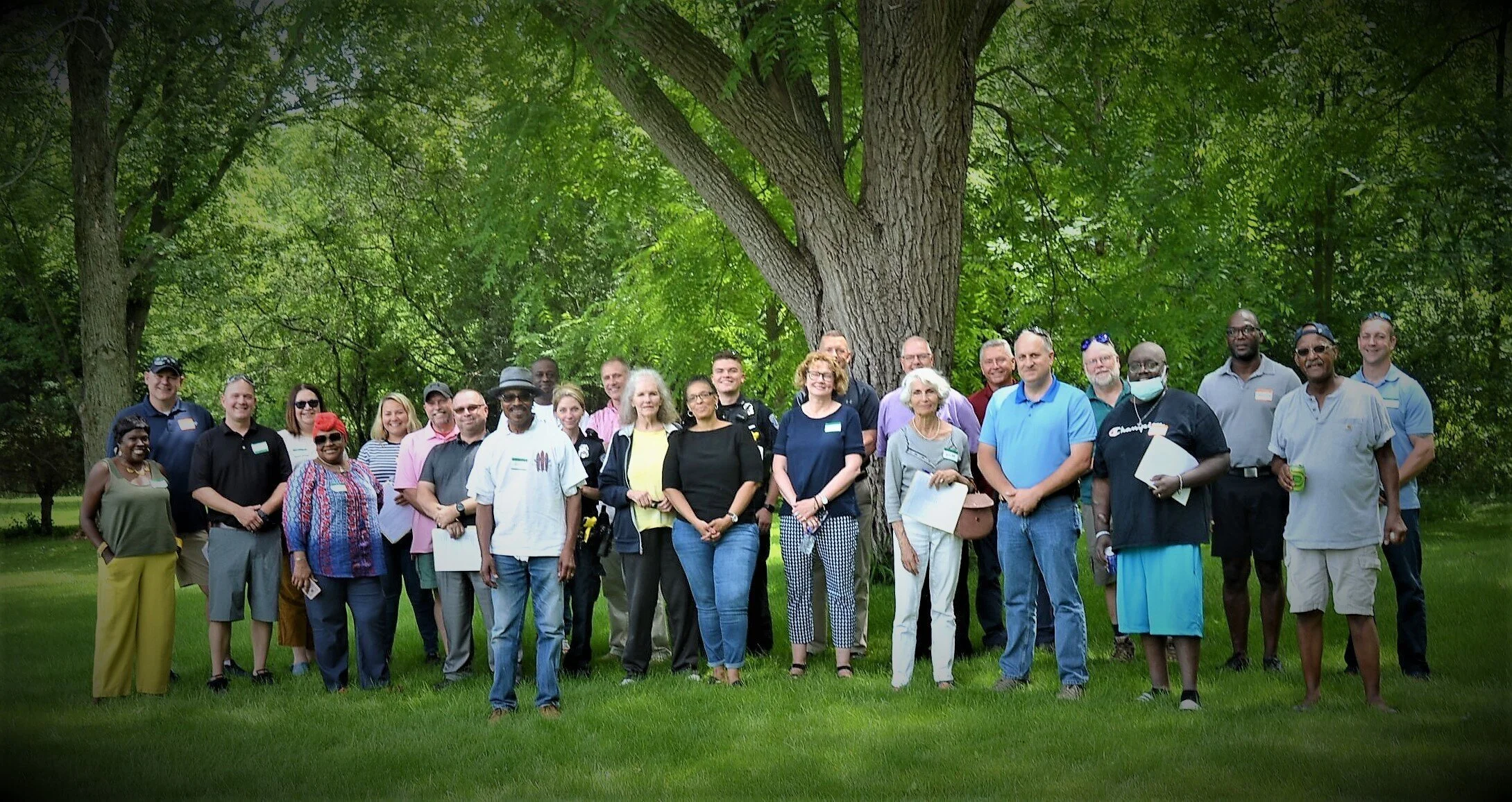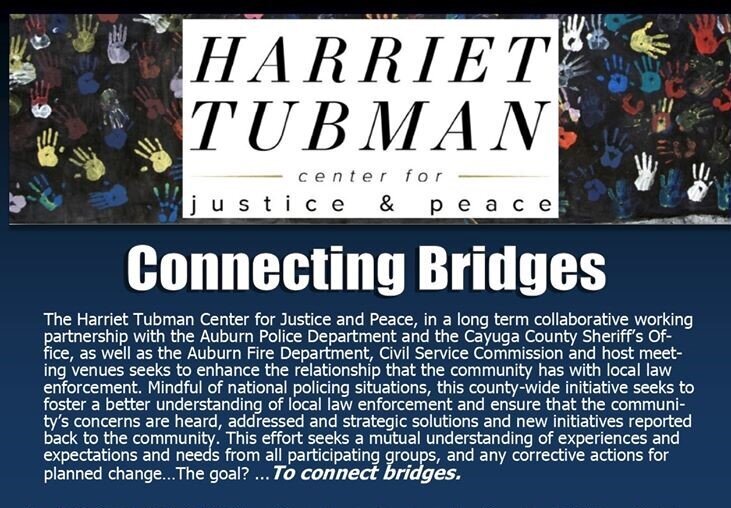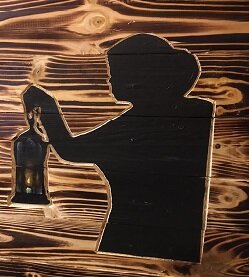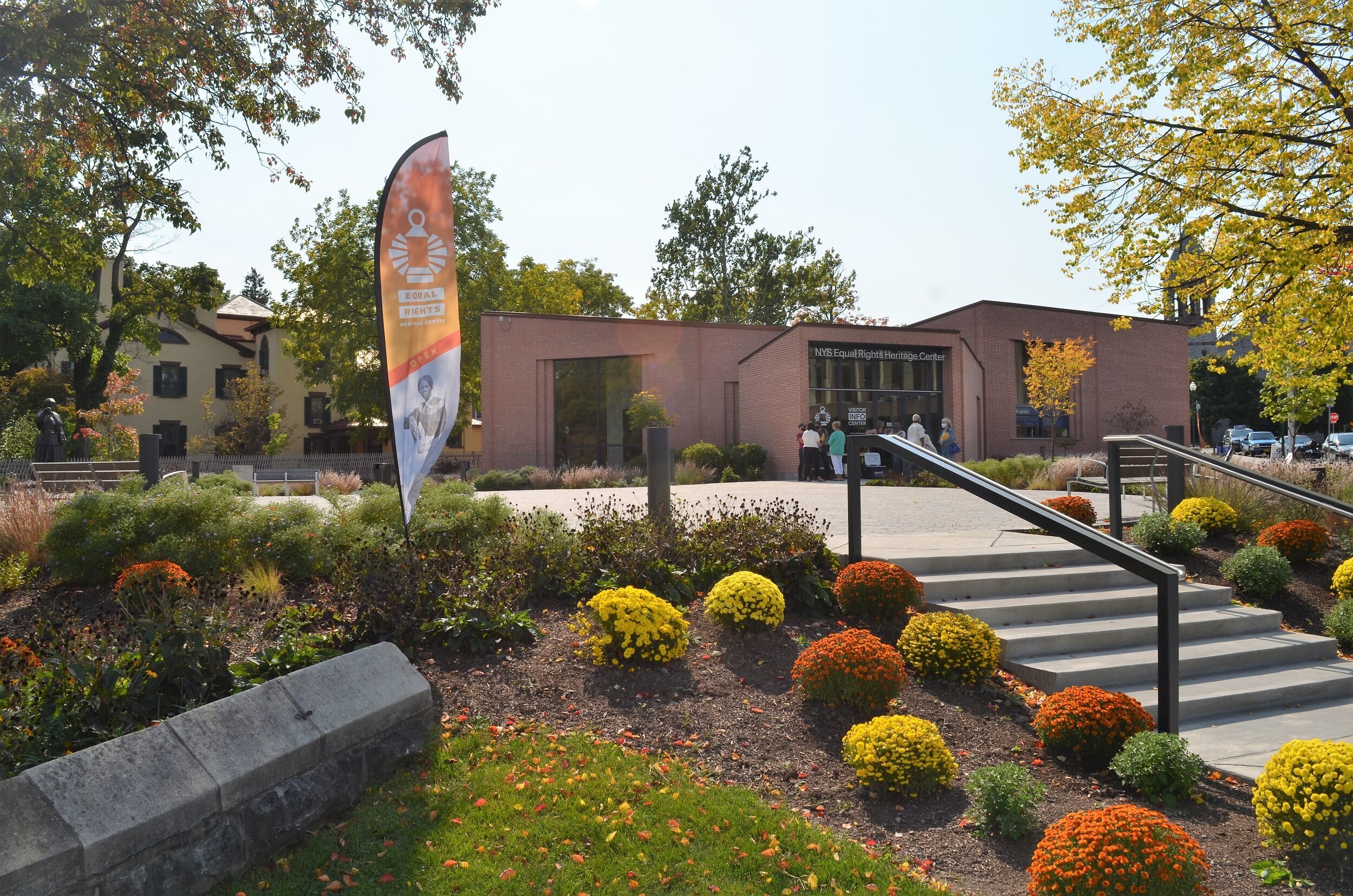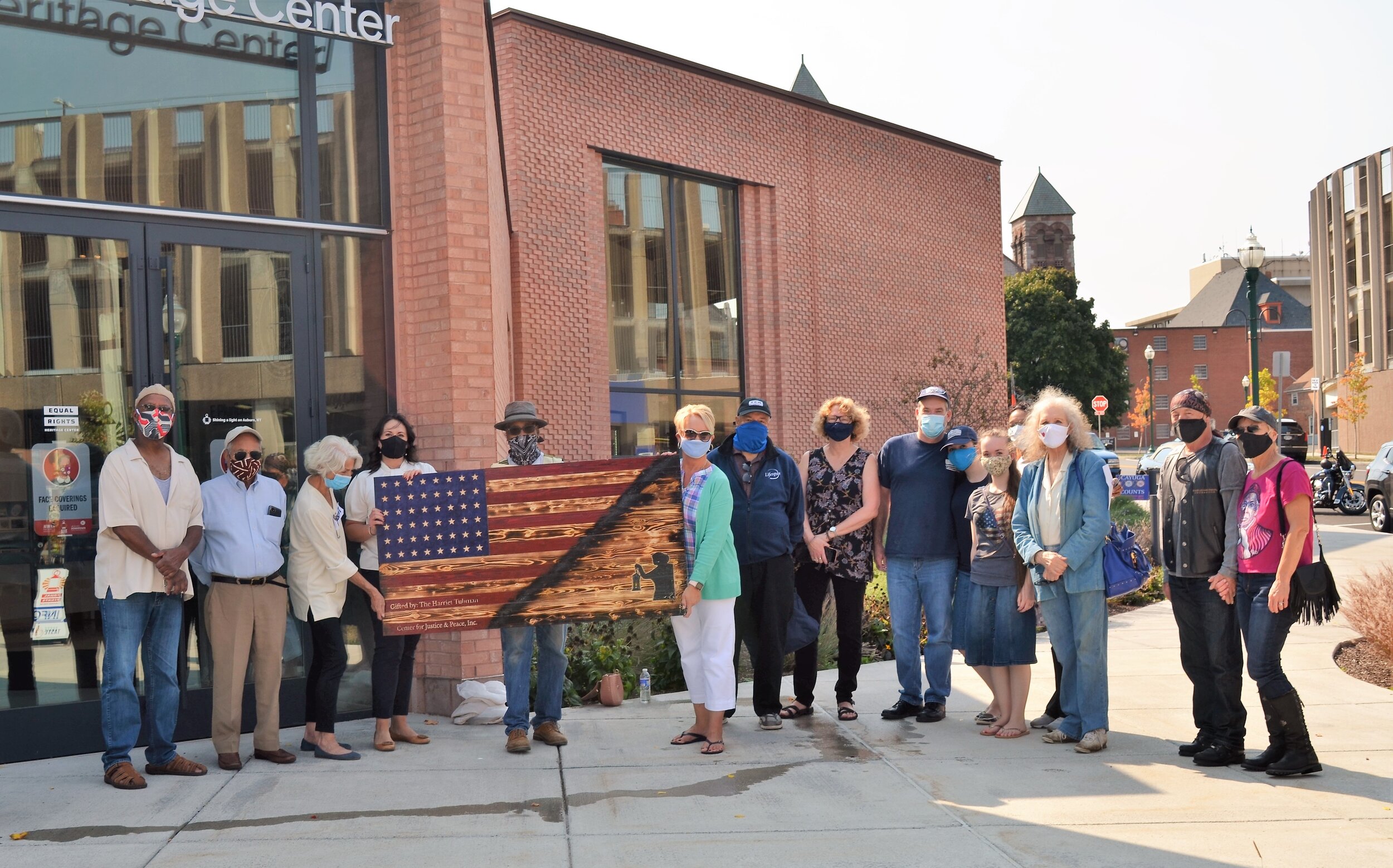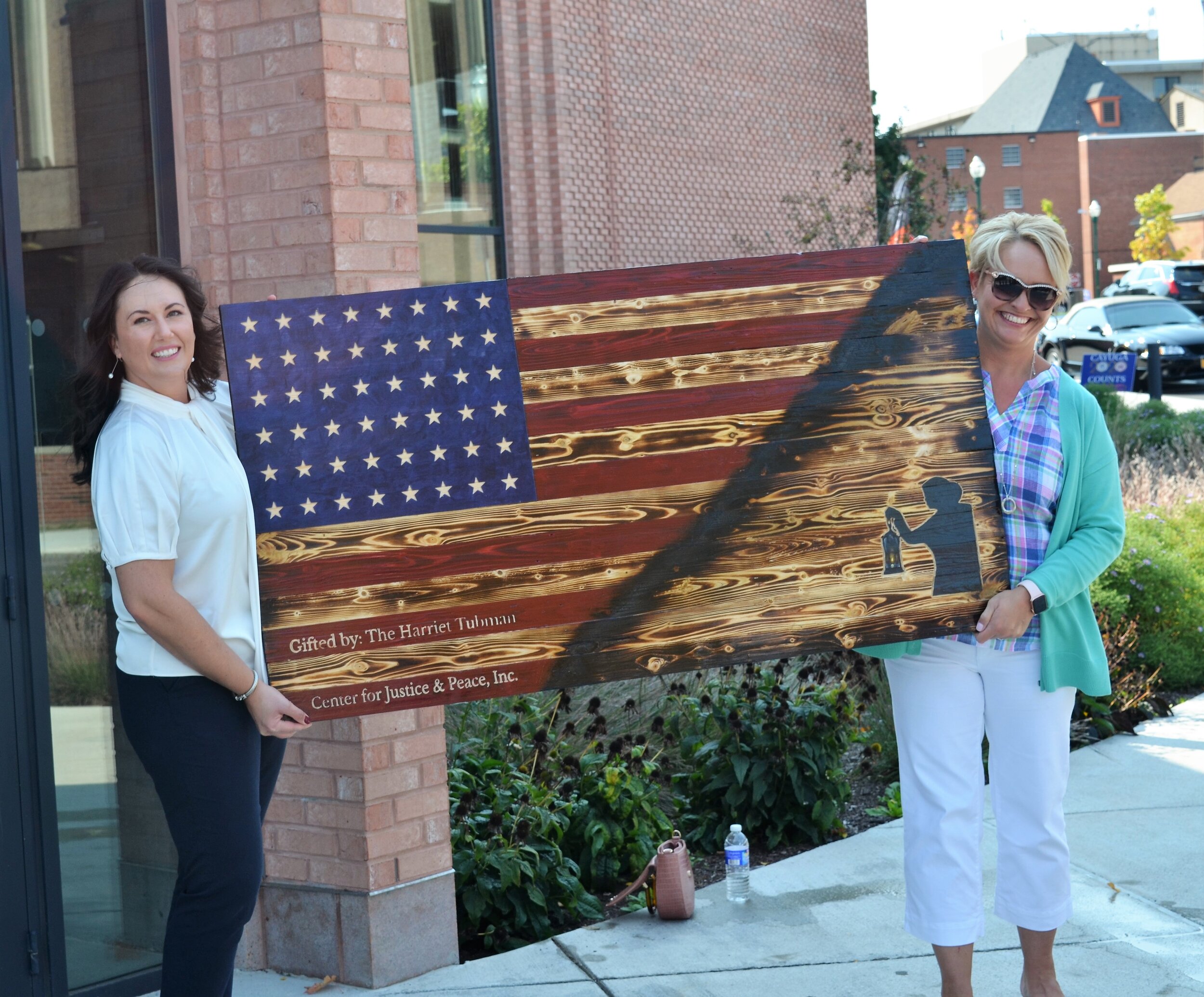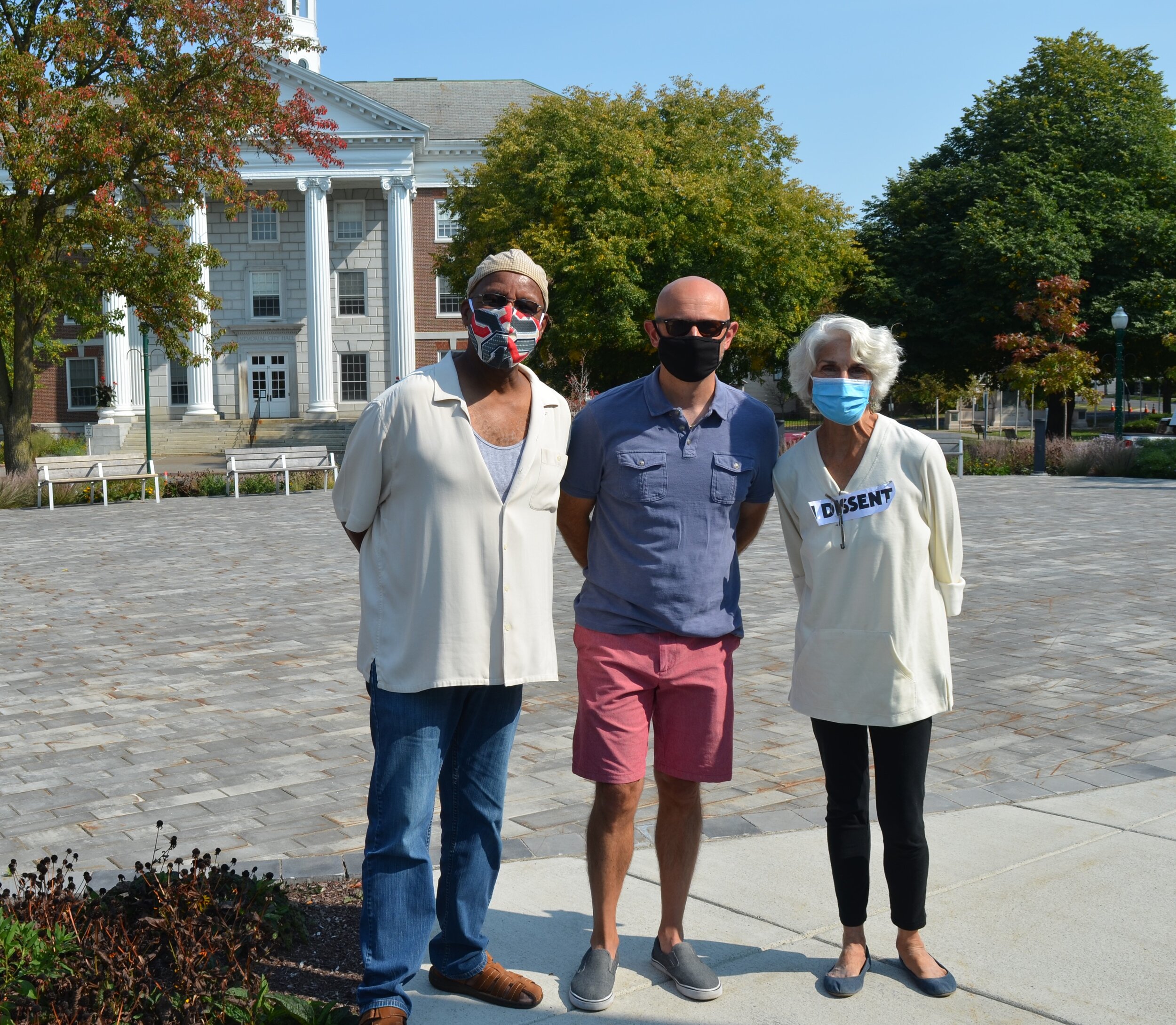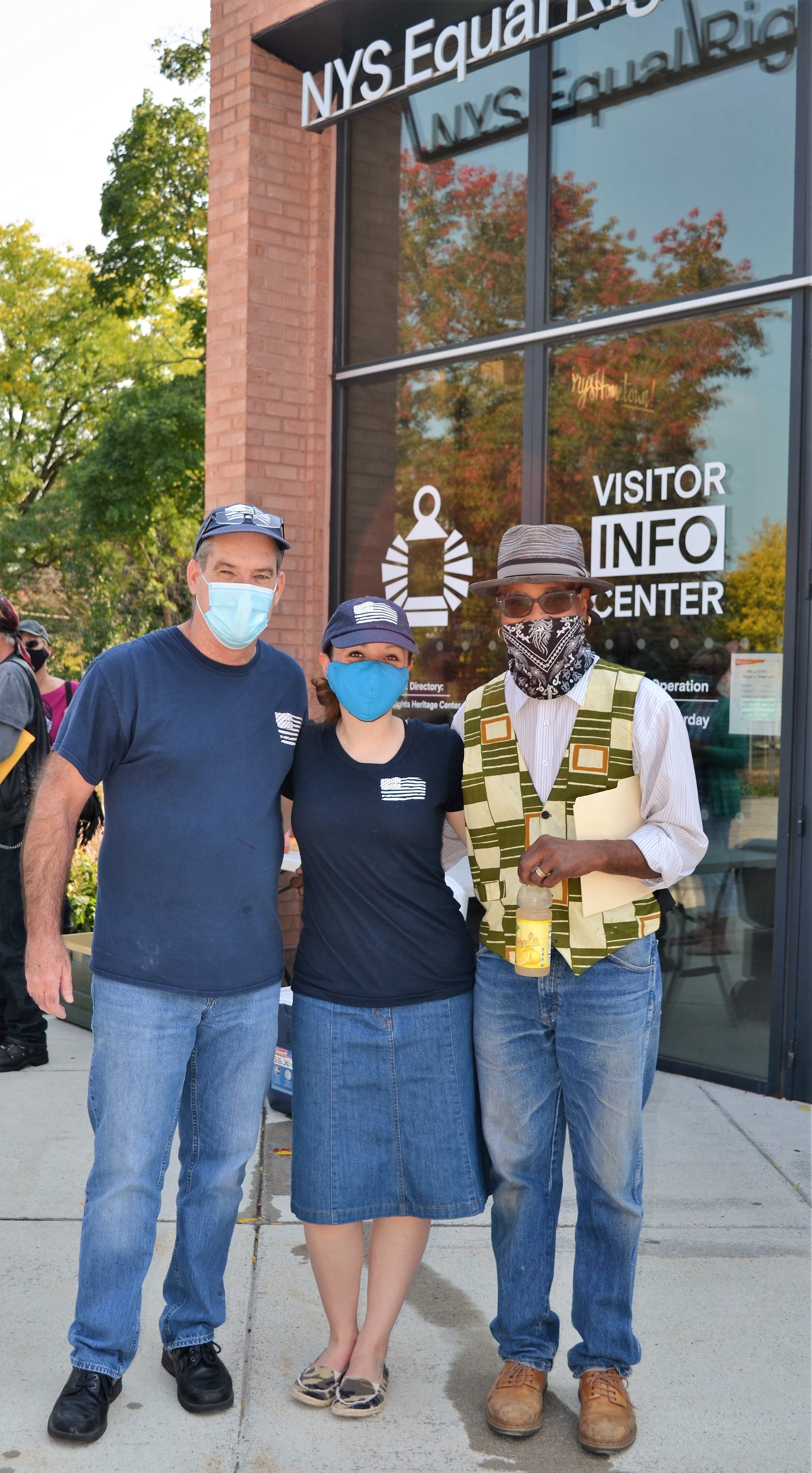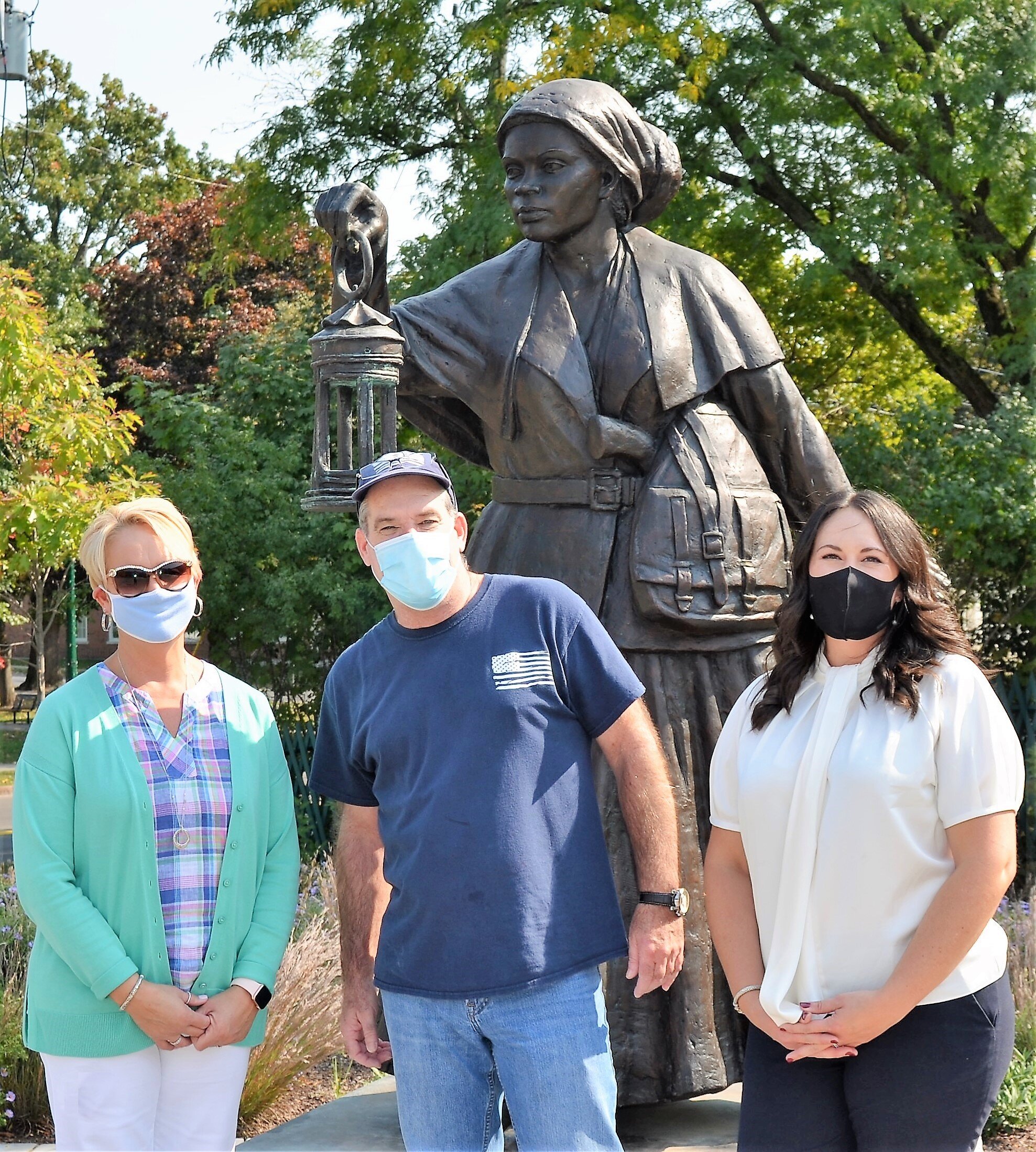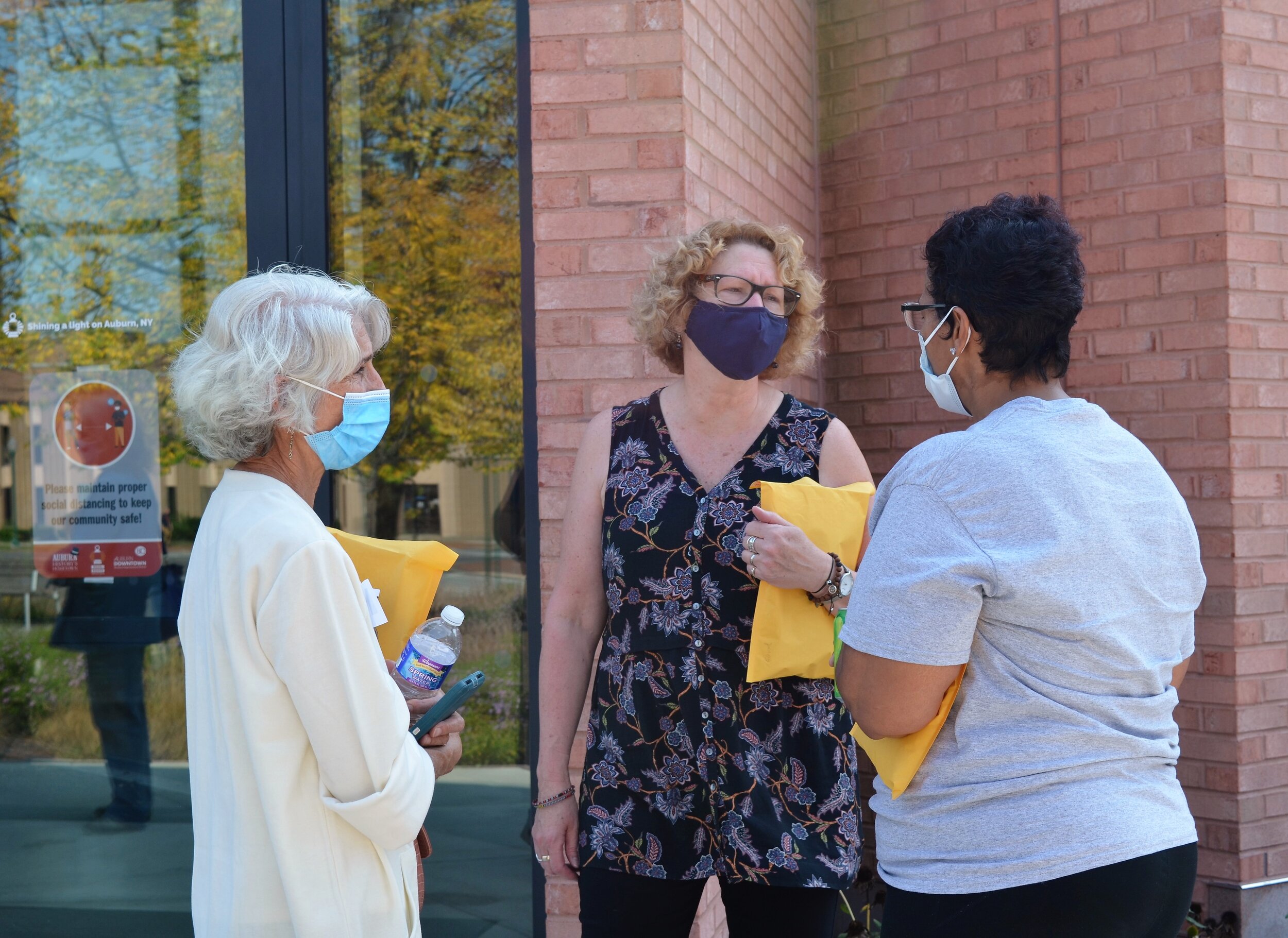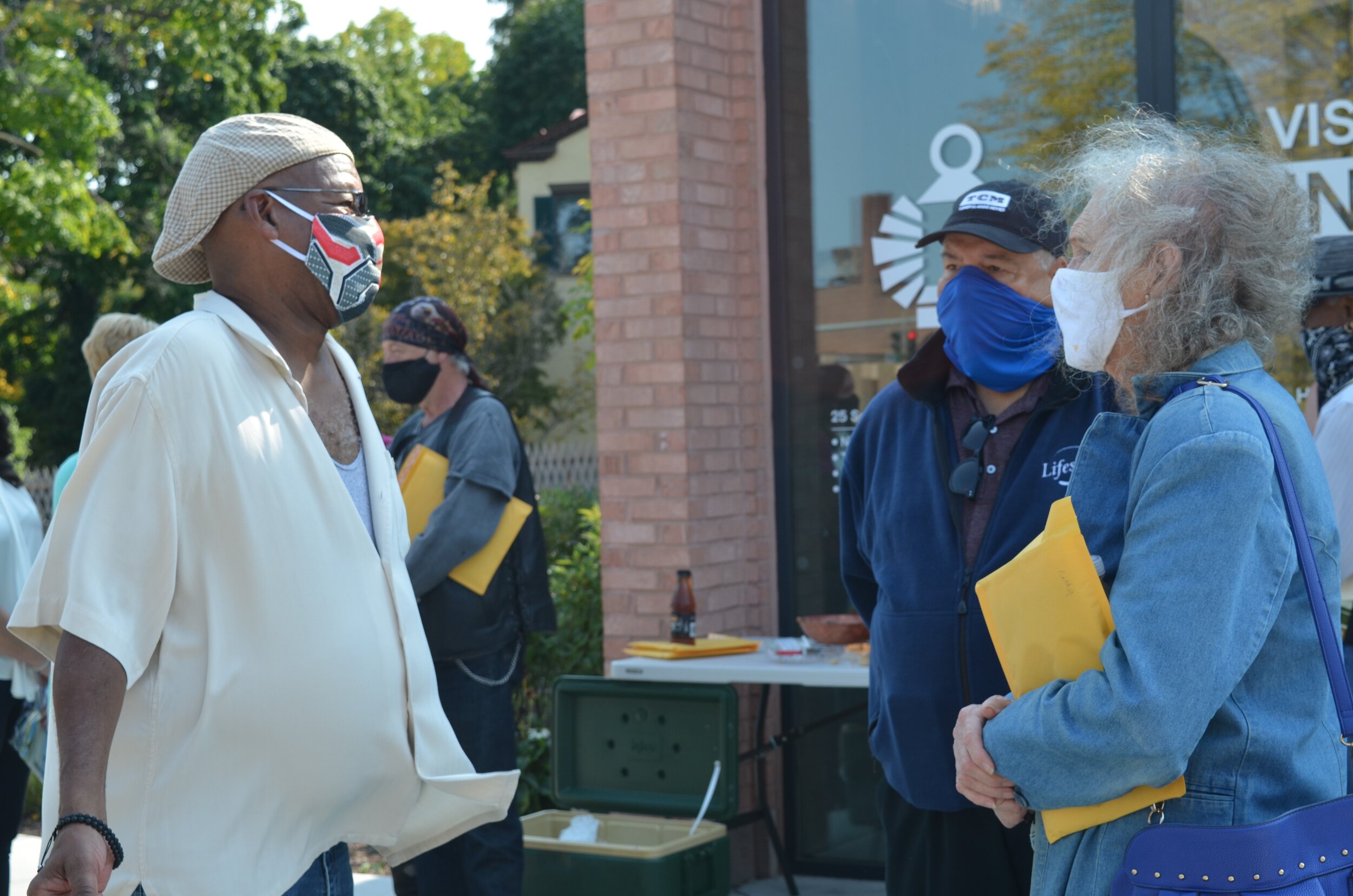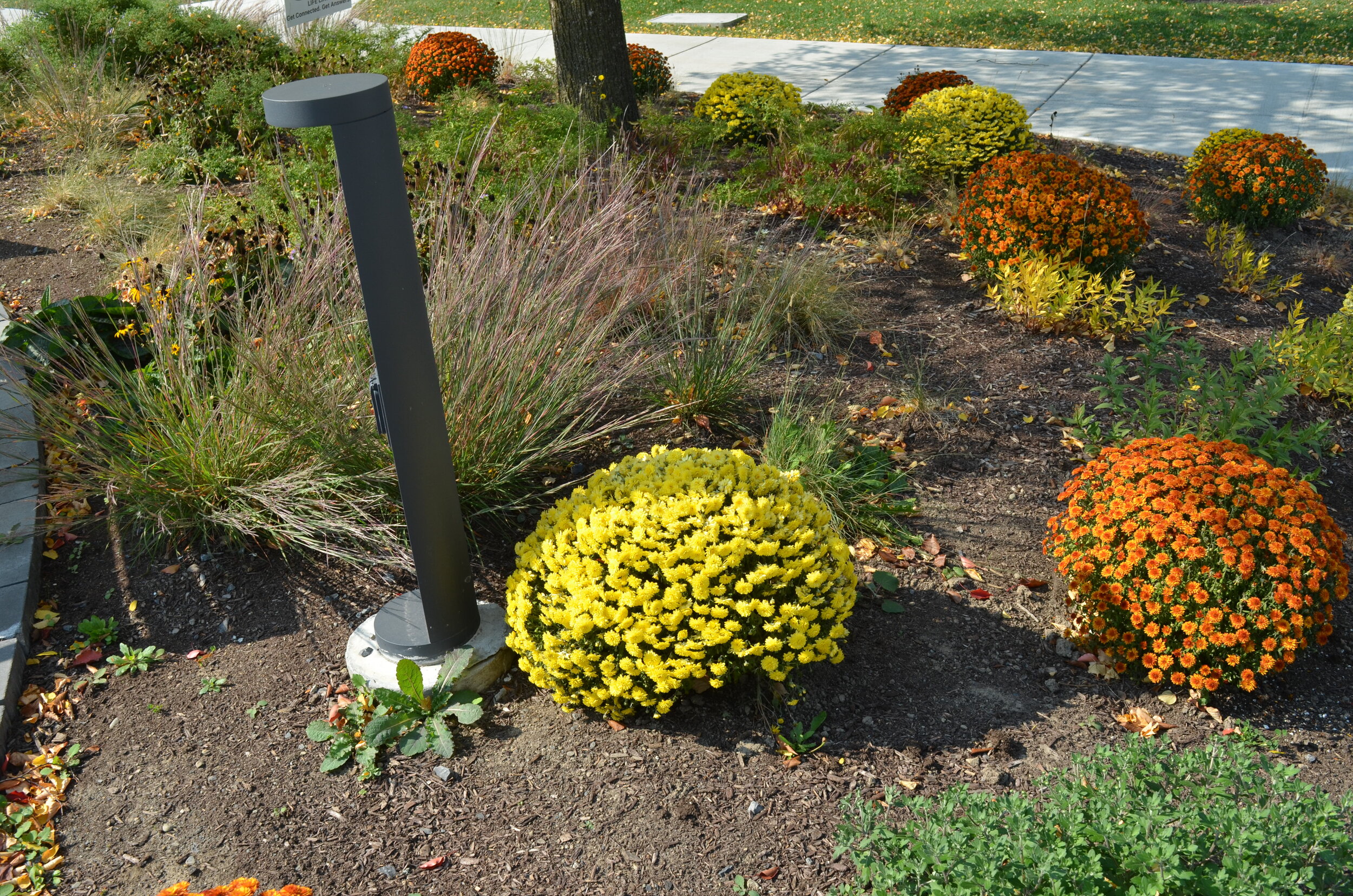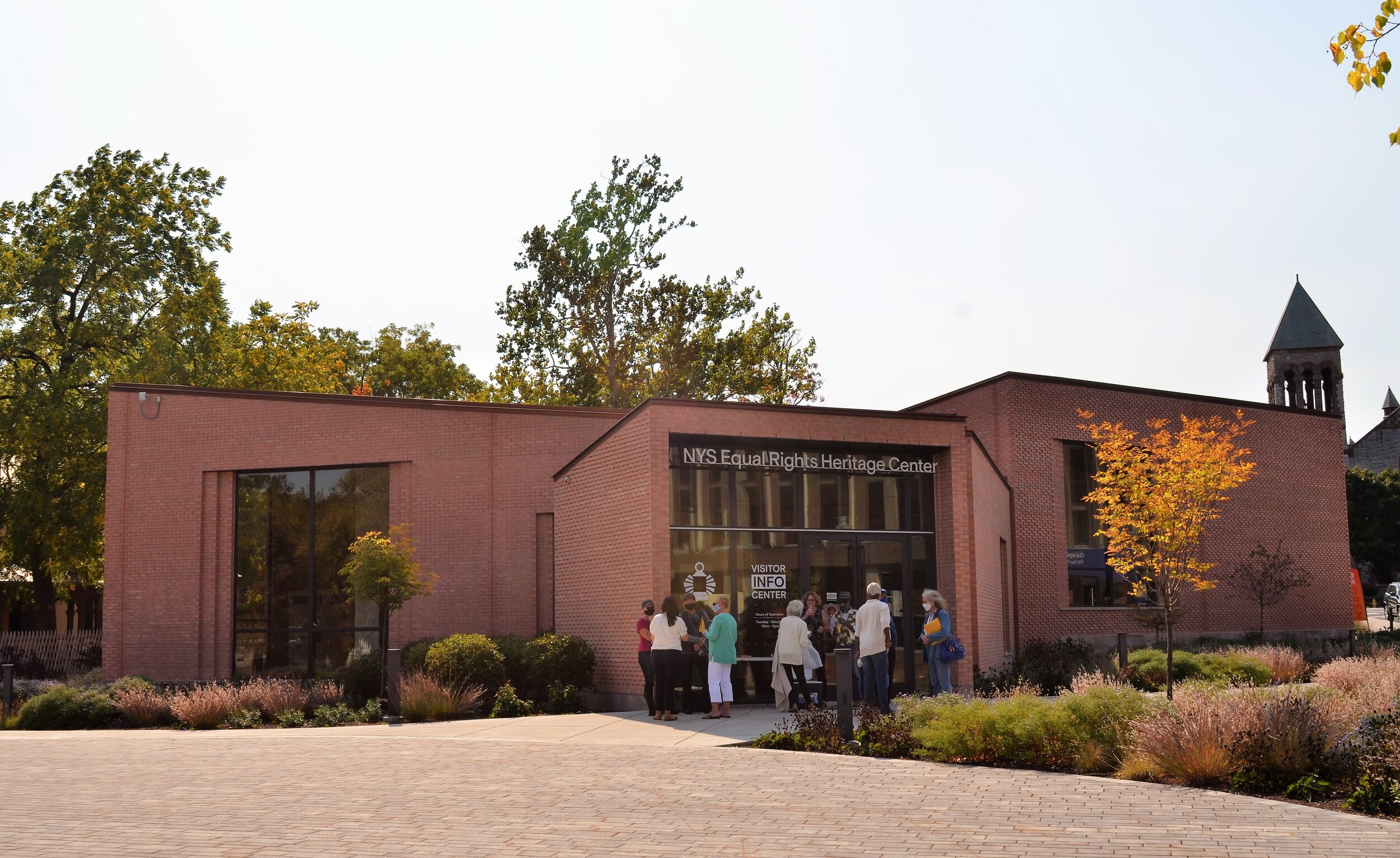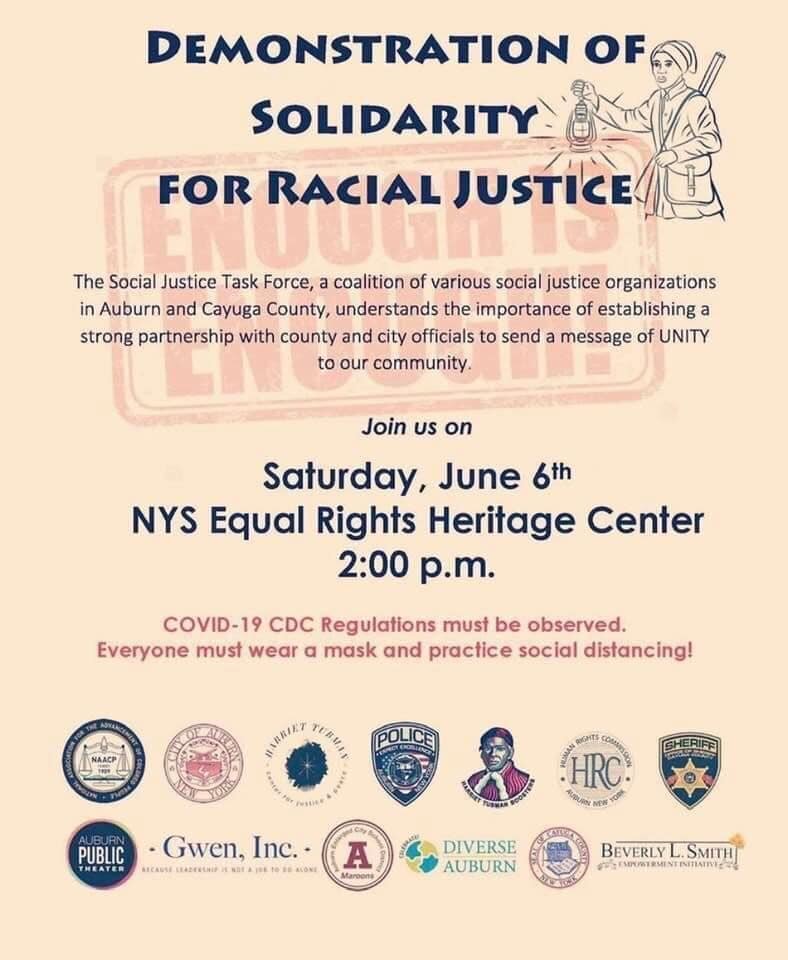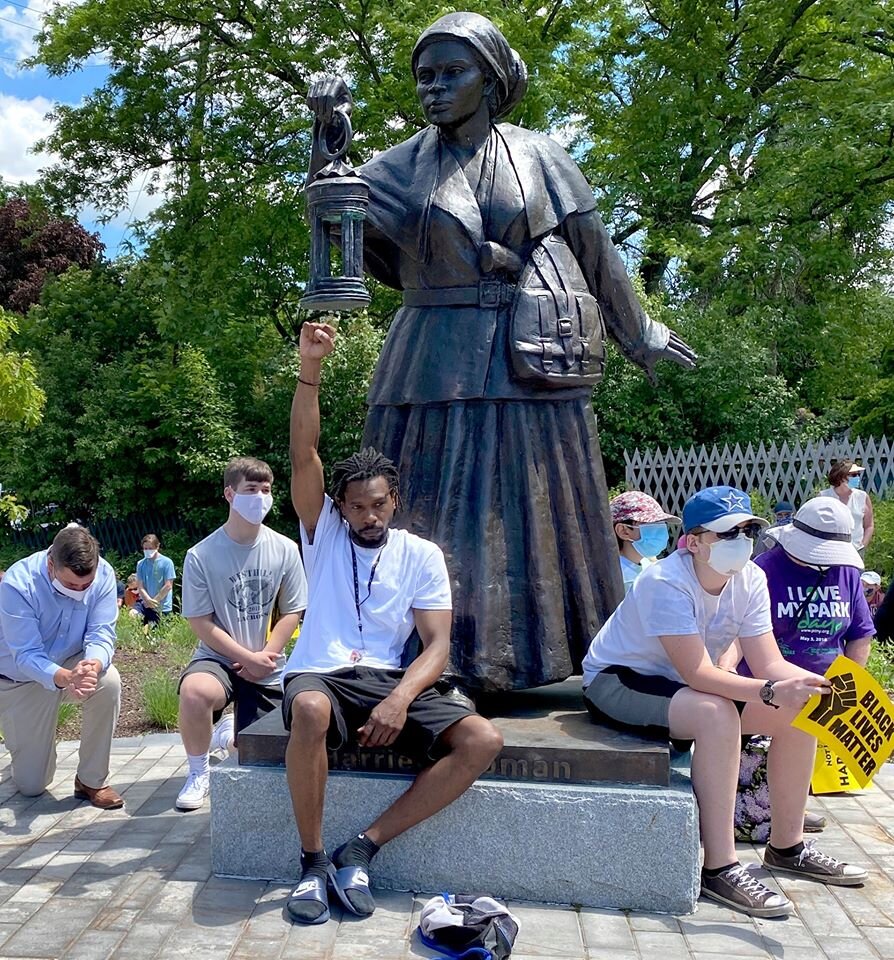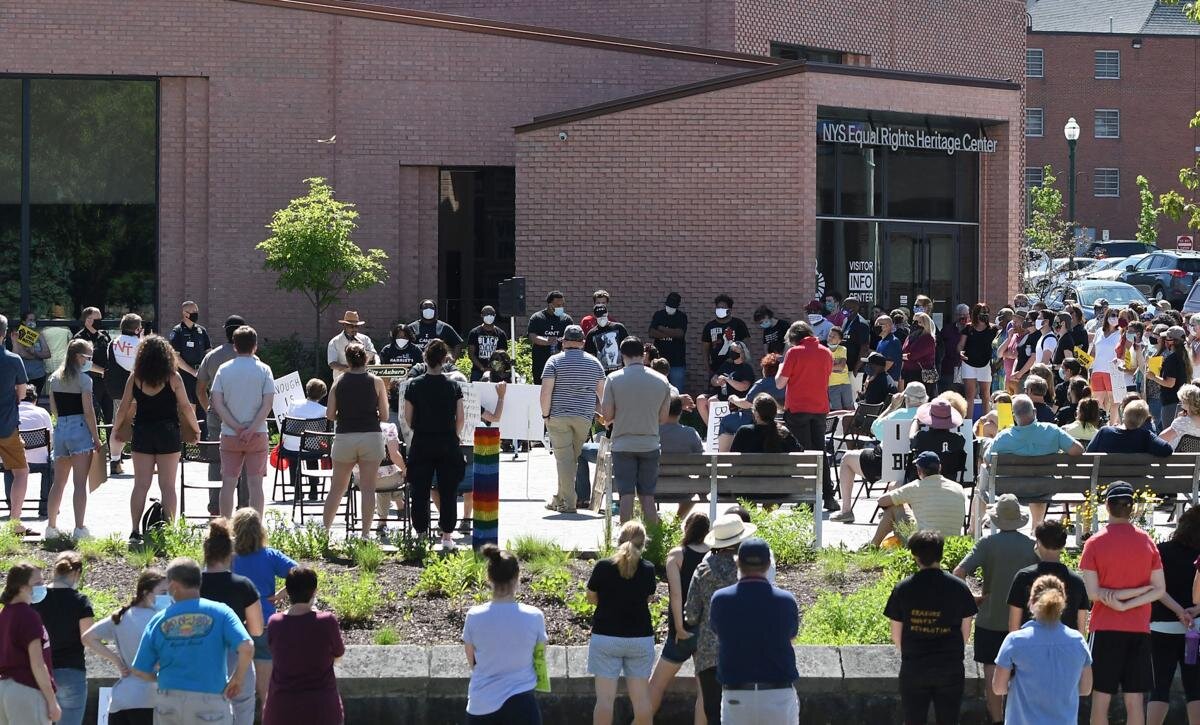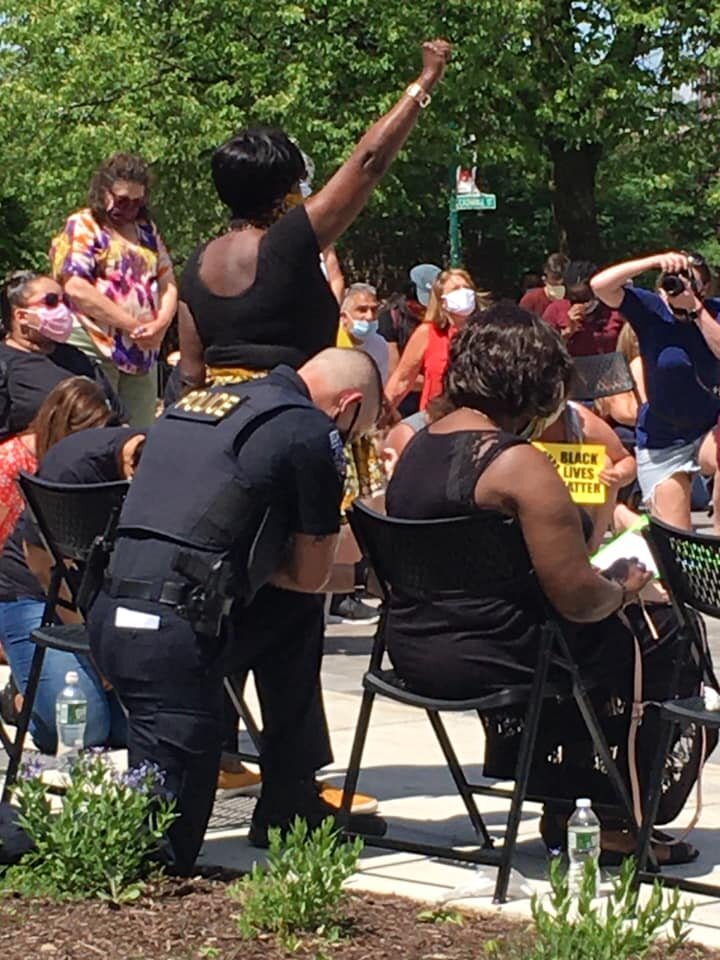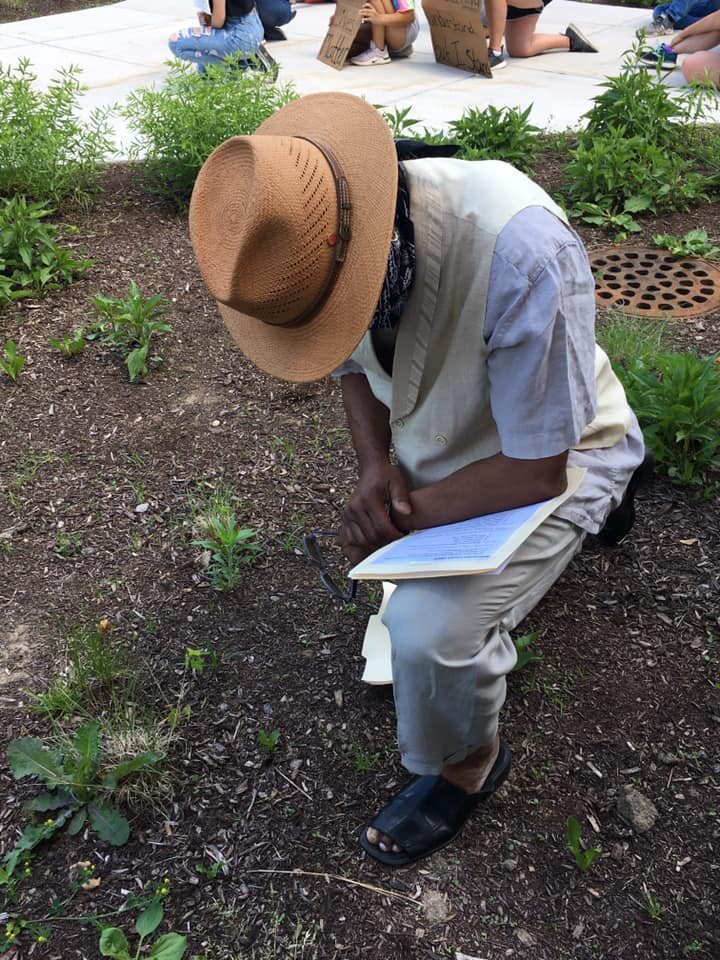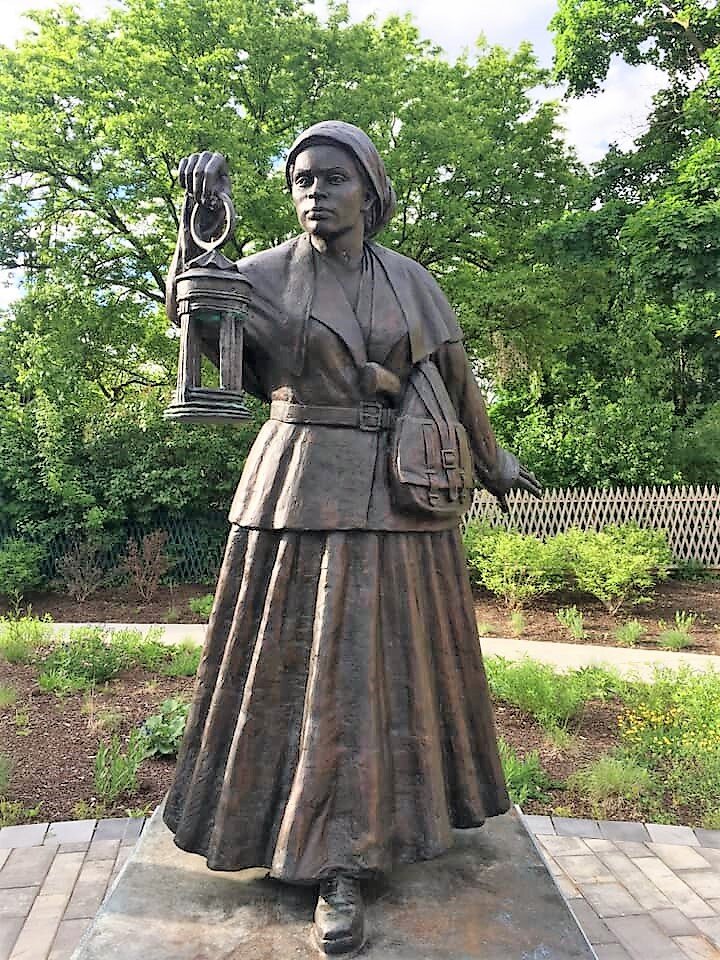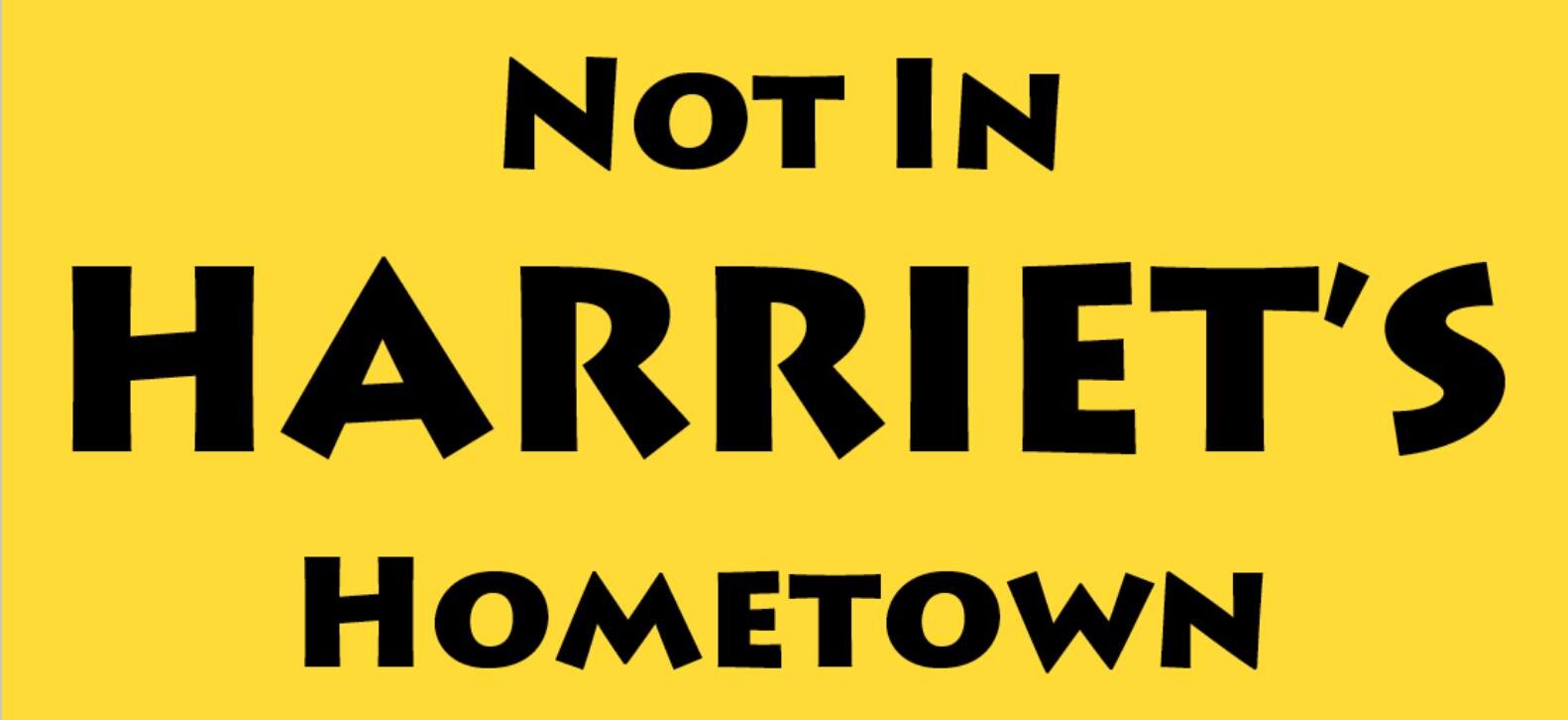A “ Connecting Bridges” Initiative meeting held at the Schweinfurth Memorial Art Center, Auburn, NY on October 5, 2020.
(Left to Right) Lieutenant James Slayton, APD, Deputy Chief Roger Anthony, APD, Chief Shawn Butler, APD, Jack Hardy, HTCJP board member, Patrol Lieutenant Michael Wellhauer, CCSO, Custody Captain John Mack, CCSO, Dr. Lucien Lombardo, HTCJP board member, Sheriff Brian Schenck, CCSO, Kathleen Barnard, board member Human Rights Commission, Steve Webster, HTCJP board member, Dr. Rhoda Overstreet-Wilson, Vice-President, Auburn/Cayuga Branch NAACP. Not pictured but present, Brian Muldrow, Auburn/Cayuga Branch NAACP and bill berry, jr., HTCJP chair (Photo Credit: bill berry, jr.)
CONNECTING BRIDGES INITIATIVE
Getting To Know You: Round Two –
Getting Down to Business – The Start
Monday, October 5, 2020
9 – 11 AM
Schweinfurth Memorial Art Center
(Masks used appropriately and physical distancing was maintained.)
The purpose of this second, open discussion session was to continue efforts for law enforcement and social justice leaders to get to know each other. In addition, it was a conversation to begin to set the organizational foundation and platform for ongoing 2020-21 “connecting bridges” forums with the larger community. While we were not able to scratch the surface regarding subsequent community meetings that would include front line officers, that initiative remains a priority objective for the next session.
There is an understanding that it is critical to address community concerns regarding law enforcement practices, officer concerns, overall public safety, maintenance of equal policing treatment for all citizens even as we continue to tackle strategies to further promote employment possibilities and diverse employment ranks in all public positions.
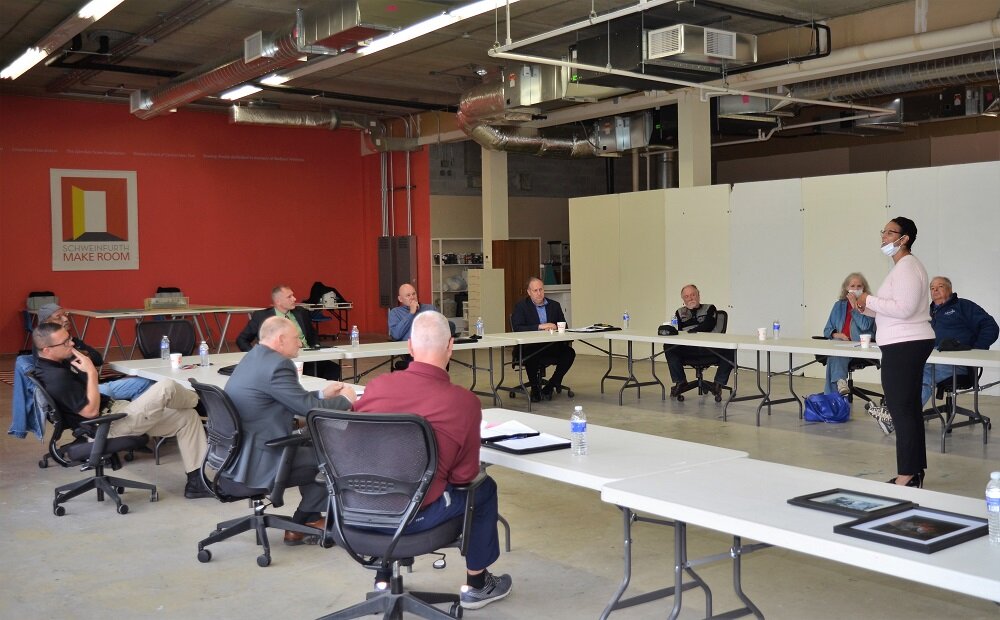
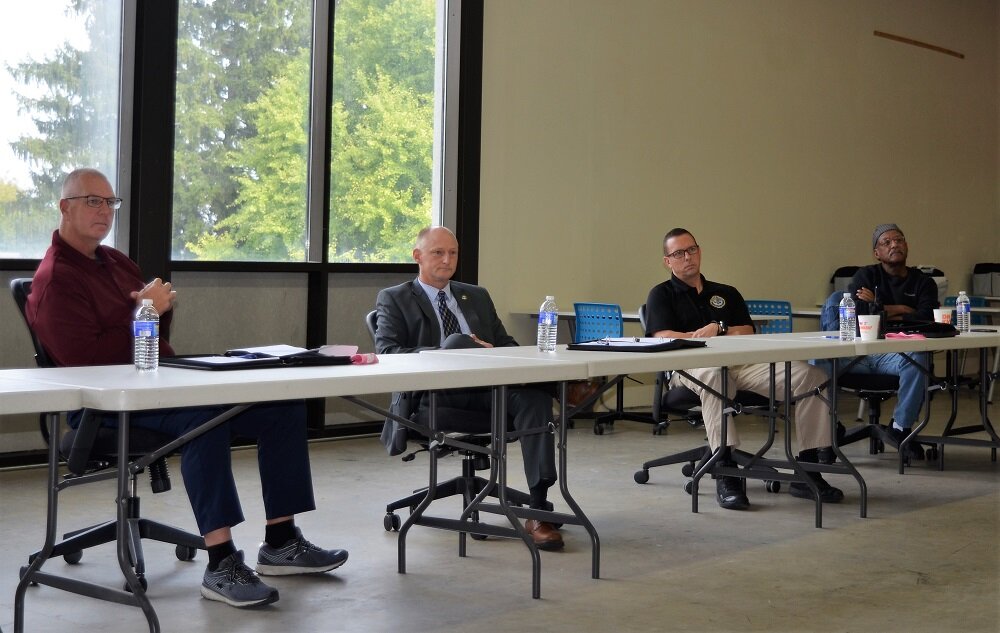
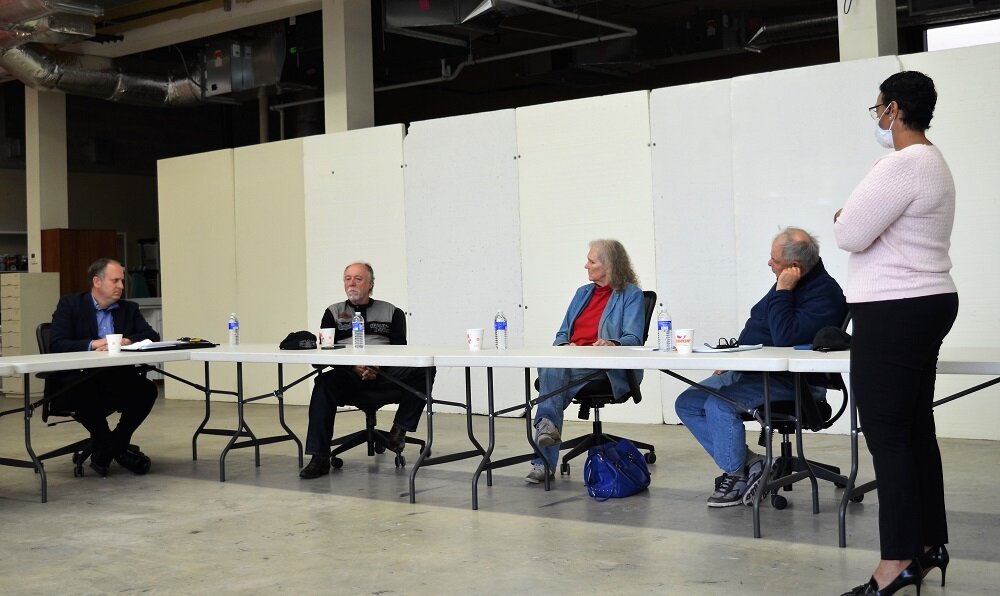
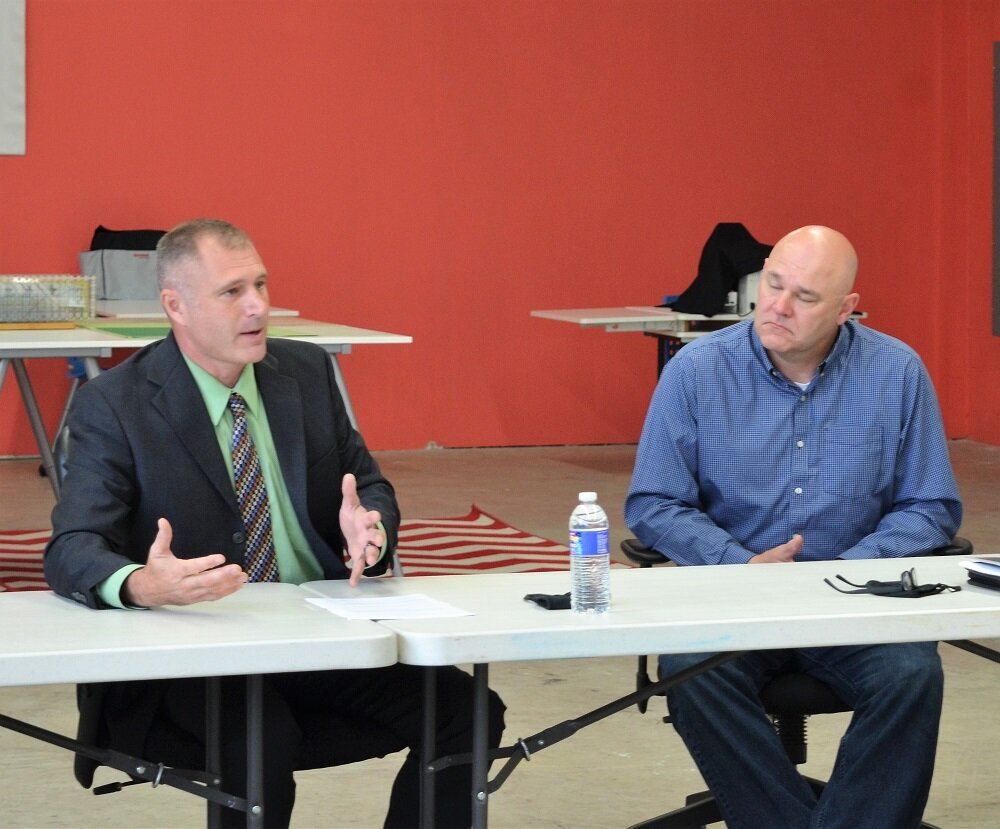
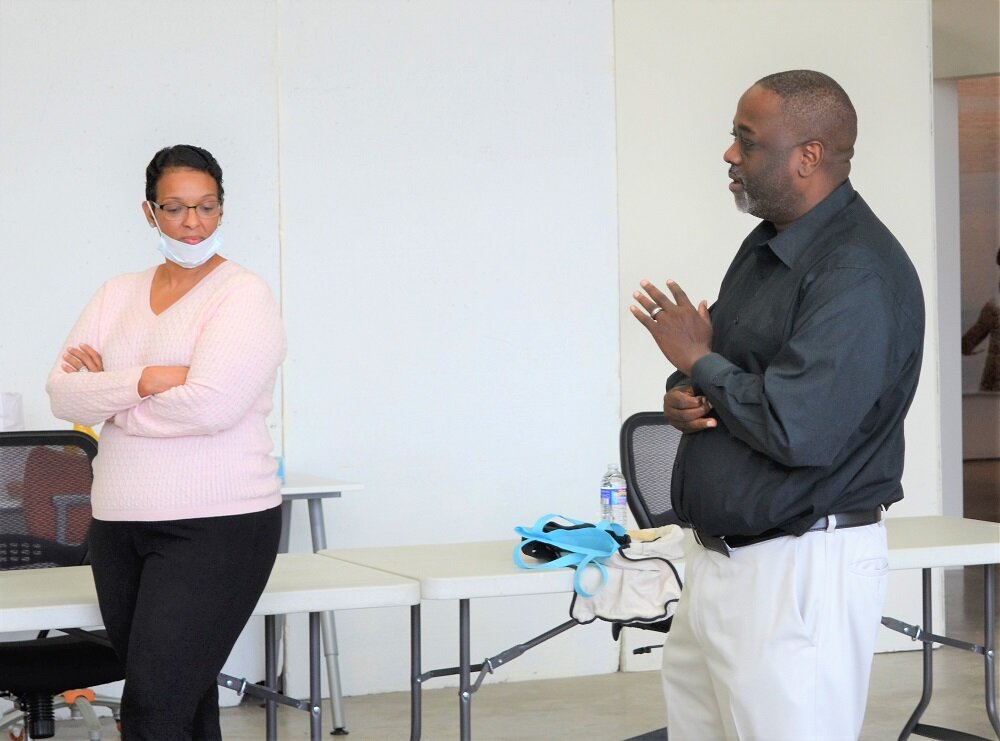
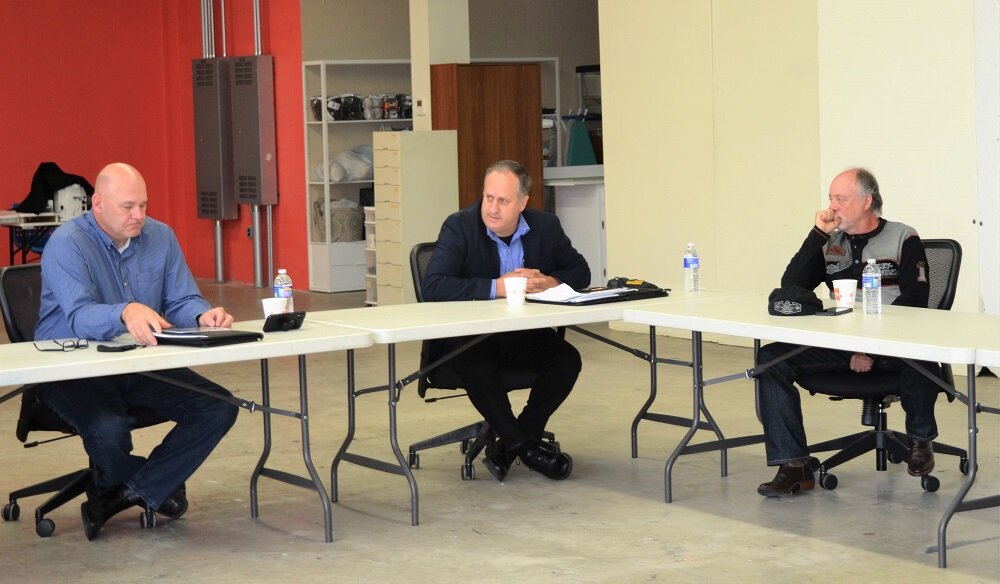
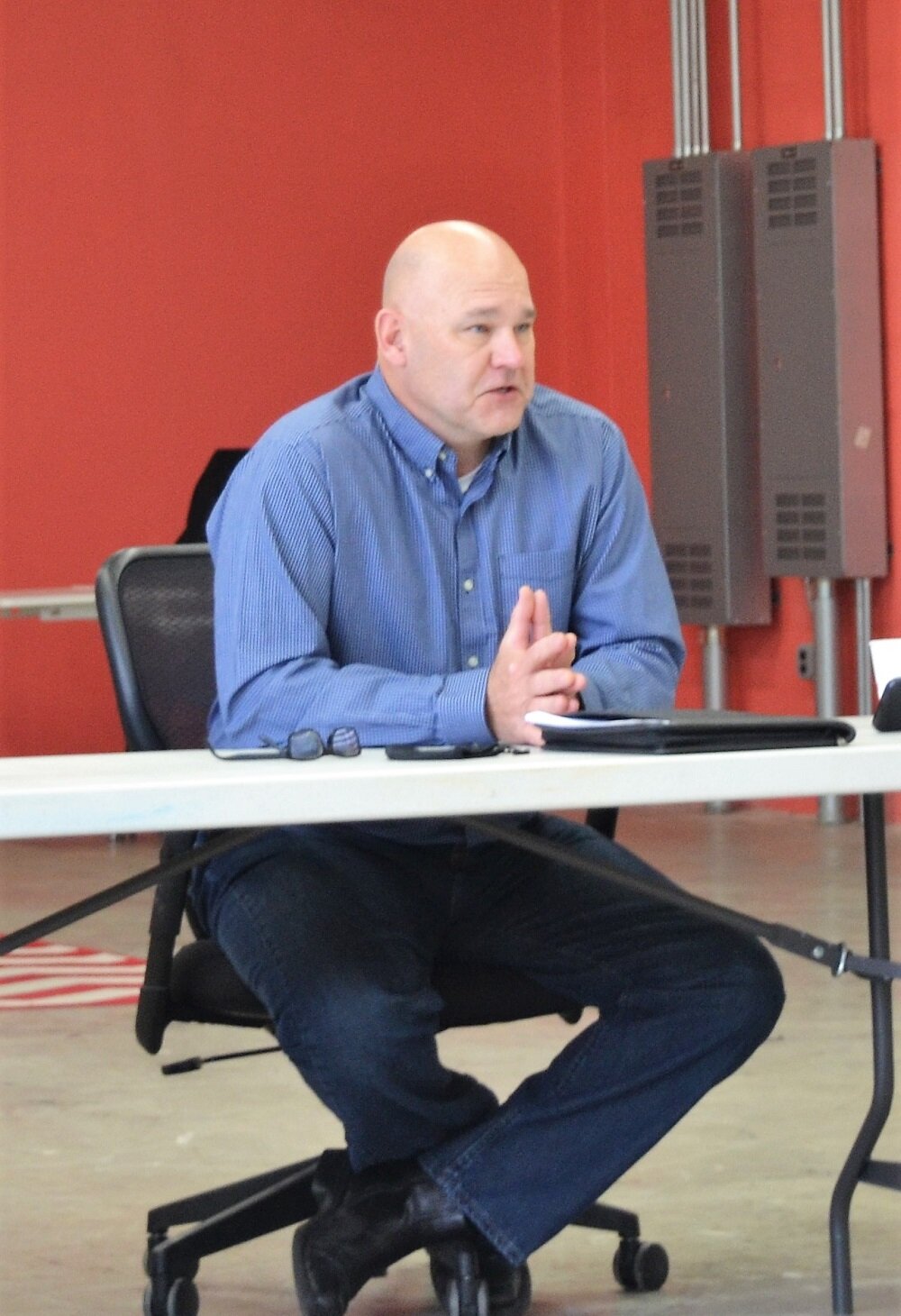
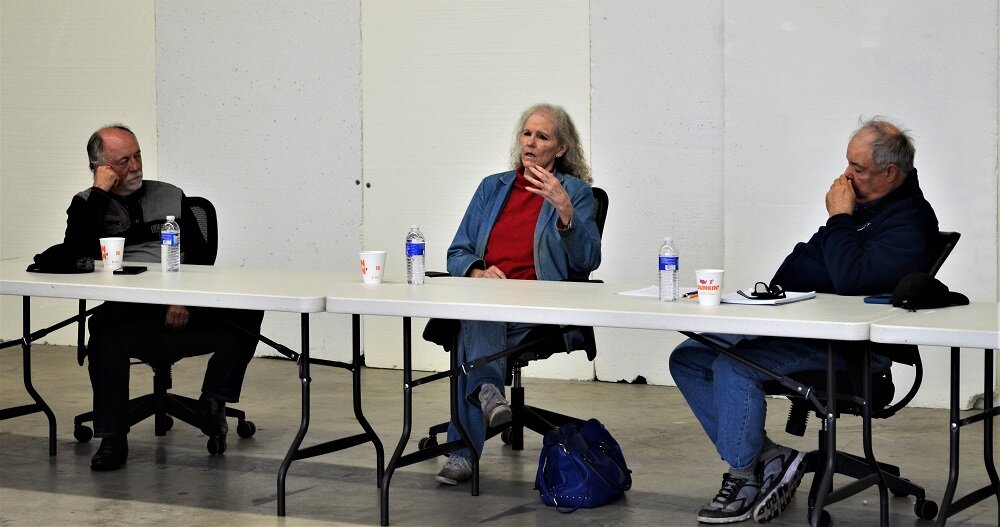
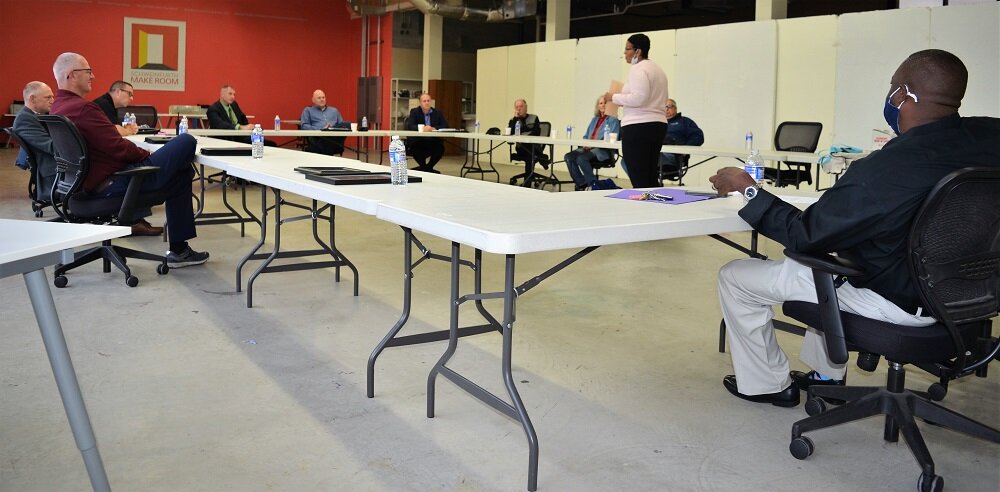
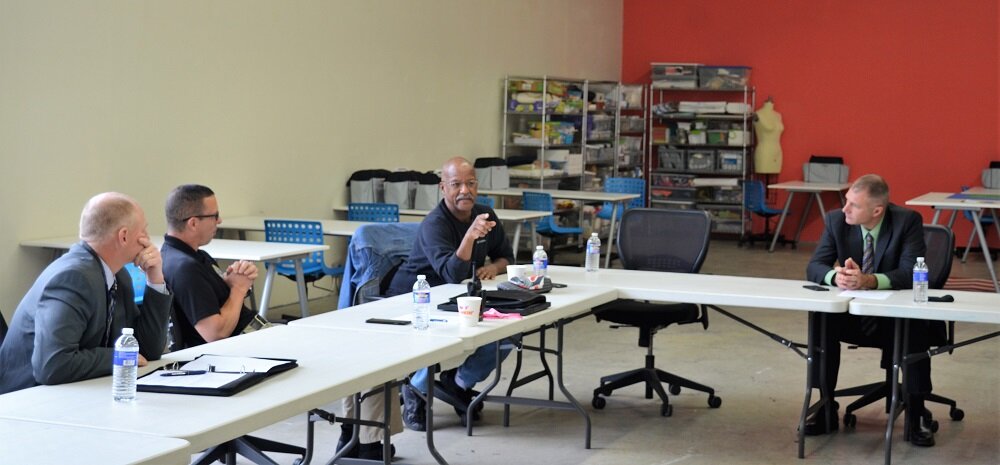
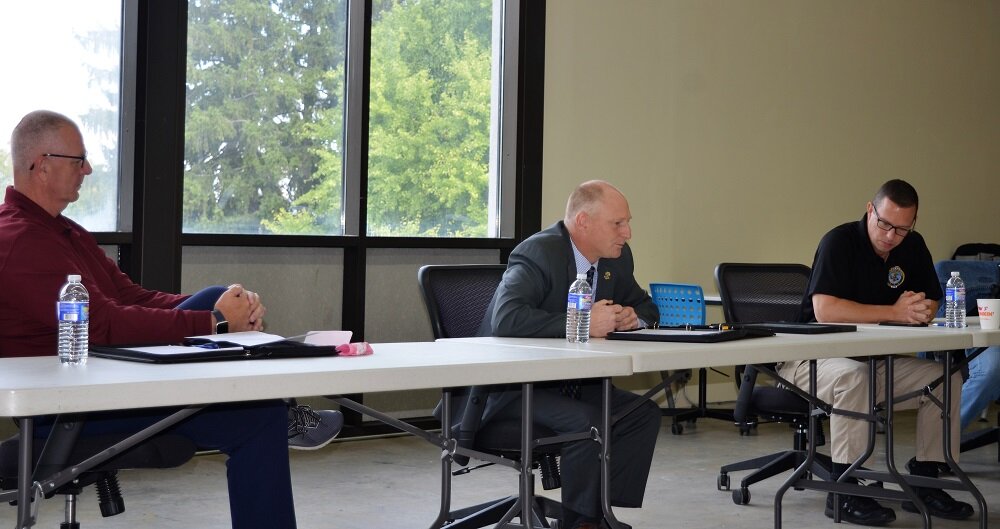
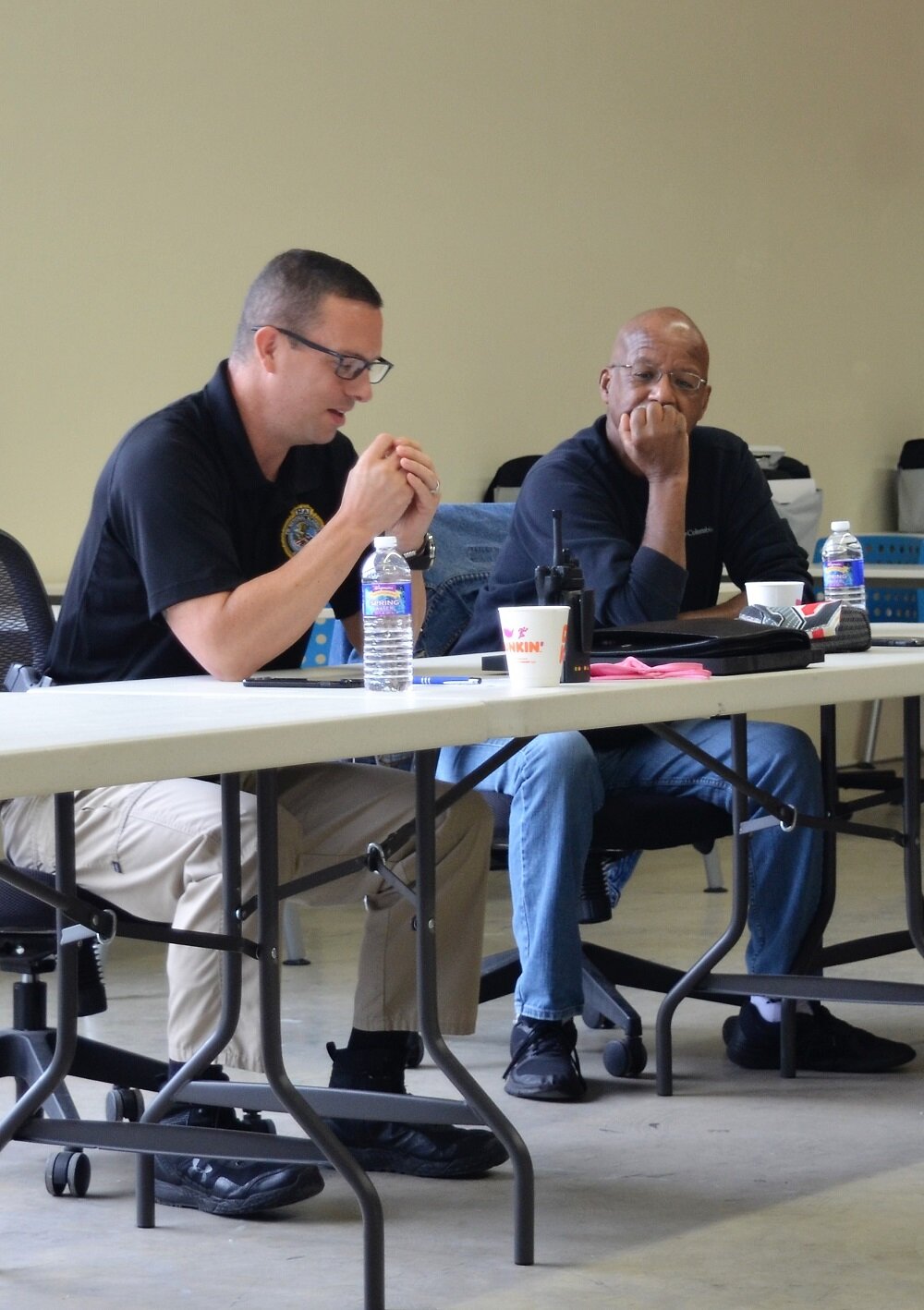
Notes on this meeting are provided after the agenda.
October 5th Agenda:
This is Who I Am – a pictorial roundtable and pass around that helps to define who you are as a person with a brief explanation*.
Describe yourself as a “spirit animal” and why – (You may want to reference Native American beliefs for guidance.)
What inclusions or exclusions should be made to enable the City/County to be stronger as a community; how do we make that happen? How do we measure planned changes?
What is the Number one priority and/or experience regarding your job or activism that the community should know about?
What continuously “scares” you – an opinion that can be job related or a nagging thought in general?
What should be the basic tenets in a “pact” with the community that seeks to combine differences as a shared obligation for mutual respect, understanding and appreciation for commonality; enhances the mutuality of law enforcement/uniformed services for officers and residents to serve and protect each other in a proactive effort for unified public safety?
{Coffee and orange juice were provided.}
* Bring a family specific photo that defines who you are as a person – individual or group family photos are recommended. No pets, landscapes, or any other third-party innate object photographs allowed.
* * *
October 5, 2020 Annotated Notes:
- Welcome & Introduction
- Sharing photographs with personal stories, and a challenge.
The challenge question to ponder: While people evolve and change over time, the core relationship between people of color especially African Americans and law enforcement has not changed on a global/national level. It portends to be the same relationship through several decades into the 21st century.
This getting to know you U-table exercise was to continue our proactive efforts to get to know each other on a personal level and not necessarily as someone defined by a uniform, job position, economic class or even a racially or culturally defined group.
- Discussion Themes and take-aways:
Recognition of local initiatives over the past few years that may be best practices as to the changing relationship between people of color and law enforcement; need to expand the participants by bringing other voices into the conversation. Emphasis on separating local dynamics from national occurrences.
Need to better understand and value the background of all people. Sort through the dynamics of power and its impact on those without. Work to understand how we got to be who we are and to understand and appreciate that others with different experiences got to be different! It takes work to understand and appreciate salient differences.
Articulated the effects of geography, where one grew up as a defining component of who you are and how that influences who you become through developmental years and maturity levels. Need to tackle who a person is and not by a physical feature or what that feature may represent. How does prejudice experienced as a youngster shape one’s worldview as an adult.
Recognize in discussions that at one level we are part of one community (city, county, state) but on other levels we are simultaneously part of different communities of experience and culture (racial, ethnic, socioeconomic, occupational – e.g. police communities). At this level we also have different experiences across and within each characteristic!)
The complexities of military service that can create a singular mindset and group experience that suggests a denigration of differences. And how folks still hold onto difference in various social settings. Have to tackle the systemic obstacles that deny opportunity to African Americans and how white parents do not bring the same concerns of survival to their children in the manner that black parents have to engage their children. Must ponder the consequences of drug and alcohol abuse on the societal temperament and perceptions of all people regardless of a race.
The importance of family as a common denominator among all people. As well as the critical importance of children and their friendships growing up. Need to embrace our youngsters’ ability not to see societal barriers to friendship and group play devoid of those indicators that continue to divide adults. What are the dangers of assumptions?
The overwhelming impact of a significant other regardless of the societal construct that may try to define that relationship. The value of teaching and embracing differences as well as the fear that those differences may bring based on surroundings. The need to build relationship among and between people. What is the intrinsic value of geographical size in terms of relationships? What is possible and achievable being a small community versus a large regional sector or diverse city?
The need for a camaraderie of shared experiences even within the artificiality of separateness. The inherent danger of “painting” a group with a broad “brush” based on the act or actions of a single individual who may look like but not necessarily represent a racial group the individual may belong to. The need to better understand and comprehend the critical juncture and apex where white privilege is confused with racism. These characteristics are distinct, but all too often are meshed to take on the mantle of sameness. The intrinsic hurt when one neighborhood is deemed better than other neighbors fueled by racial attitudes without understanding the larger forces that create less-desirable neighborhoods based on race and culture. And how do we maintain the significance of tribal communities (if we value that distinction) when there is the need to develop a singular concept of community?
The need to listen and really hear varied opinions.
The value of diverse community where shared values and attitudes can be embraced by the entire neighborhood. What has happened to the old-time community/neighborhood dynamics where residents valued each other, and their families could morph into a larger community family? Understanding the dynamics of the digital age on growing up and the resulting disassociation with each other.
The commonality of anxiety, apprehension and fear that is instilled by national events and incidents and how those situations permeate and influence local communities and grassroot movements seeking change.
What are the initial motivators when law enforcement interacts with the public especially if “color” is not a driving force?
How does exposure and interpersonal relationships impact trans-generational relationships when age and life experiences are radically different?
- Characters of community:
Ability to listen and really hear
Enable missteps without onerous or demeaning reactions
Appreciate different life experiences
Constructive dialogue and criticism should be the norm
Take time to learn and understand
The ability to transition what you thought you knew to accepting what you now know
Disagreements are not necessarily obstacles if opinions are grounded in respect
Evolution of understanding and the willingness to bring in voices that are not necessarily heard
The ability to move past the uncomfortableness of personal sharing to expose the real person
Try to expend from just doing the job towards a better sense of belonging to a community
Strengthen the ability to be patient.
Focus expectations with a realm of human dignity Recognize and appreciate our own human dignity and the human dignity of others.
Transformative nature of planned change
The need to lead by example
Face to face interactions needed in a greater frequency
Find solution
